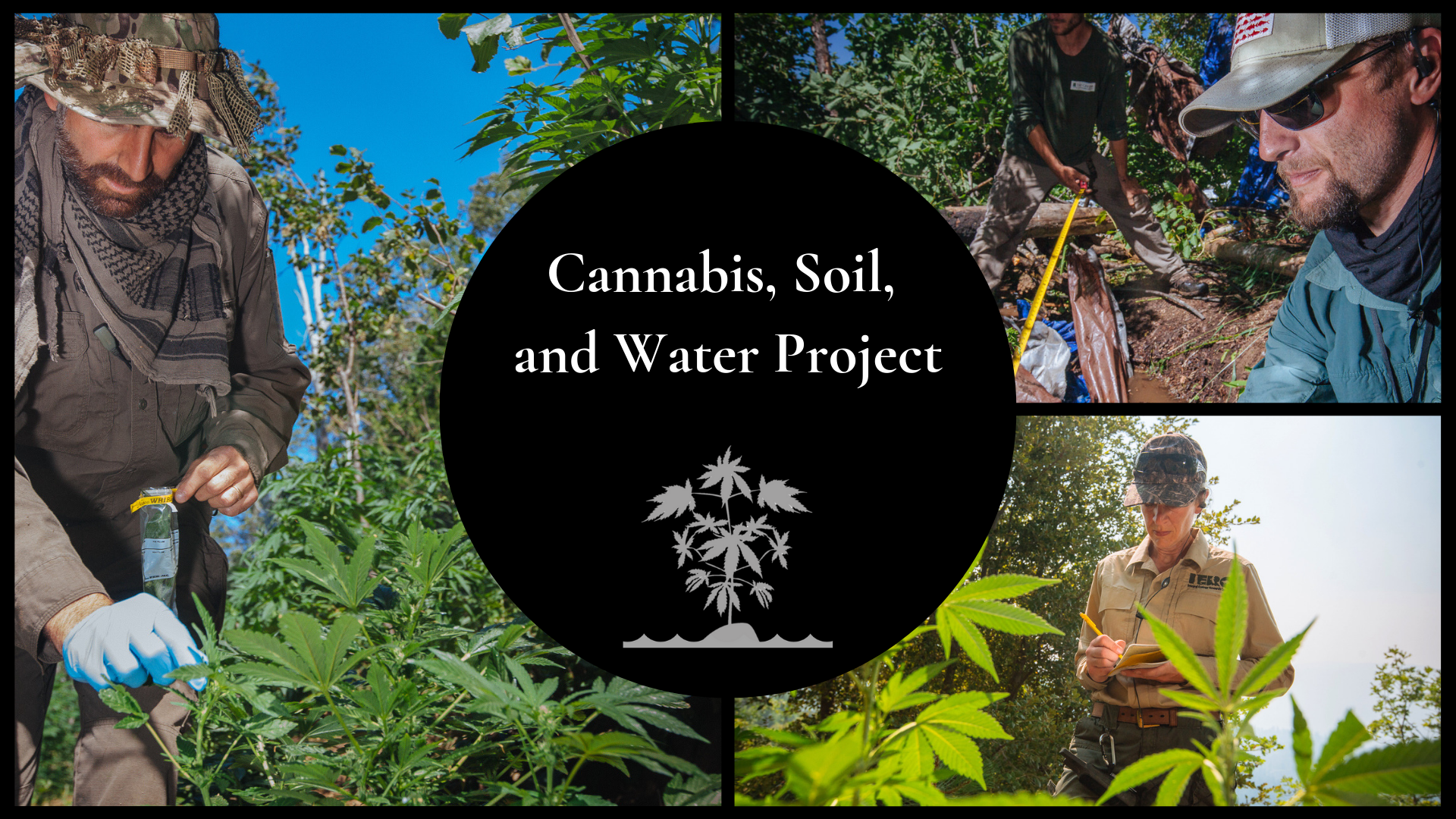
Many of the remote forests of California where cannabis is cultivated is home to many imperiled wildlife and fish species. These species and the habitats on which they depend interact with their soil and water environments on multiple levels. Abiotic substrates (soil and water) provide shelter, habitat, areas to forage for prey or simply nutrient and sustenance opportunities. The cultivation of cannabis on these remote forested landscapes and its associated use of pesticides on soil, cannabis plants and nearby native vegetation, directly and indirectly impact wildlife and fish. Furthermore, the water consumption of cannabis is highly contested, yet no empirical data exist on how much a cannabis plant uses in remote settings in California forests.
Objective: IERC is testing soil, water, cannabis, and native vegetation for over 75 different types of pesticides. At cultivation sites, we measure and monitor the diversion rate of water taken from local streams to identify the watering rate of cultivation sites and individual plants. We aim to provide spatial temporal motility and degradation data on the disposition of pesticides in soil, plant and water samples. Not only will this aid in understanding of these foreign threats to wildlife, fish and their habitats but it will also inform natural resource and law enforcement personnel on the immediate and legacy risks cannabis cultivation and associated pesticides pose to those working in and near these sites. Finally, water use data will allow us to generate water consumption rates for entire regions throughout California.
Time Frame: IERC initiated this project in 2013 and it will continue through spring of 2021.
Project Support: United States Fish and Wildlife Service, California Department of Fish and Wildlife, Hoopa Tribe’s Forestry Department, United States Forest Service Law Enforcement and Investigations, Plumas and Lassen National Forests, County of Trinity California
